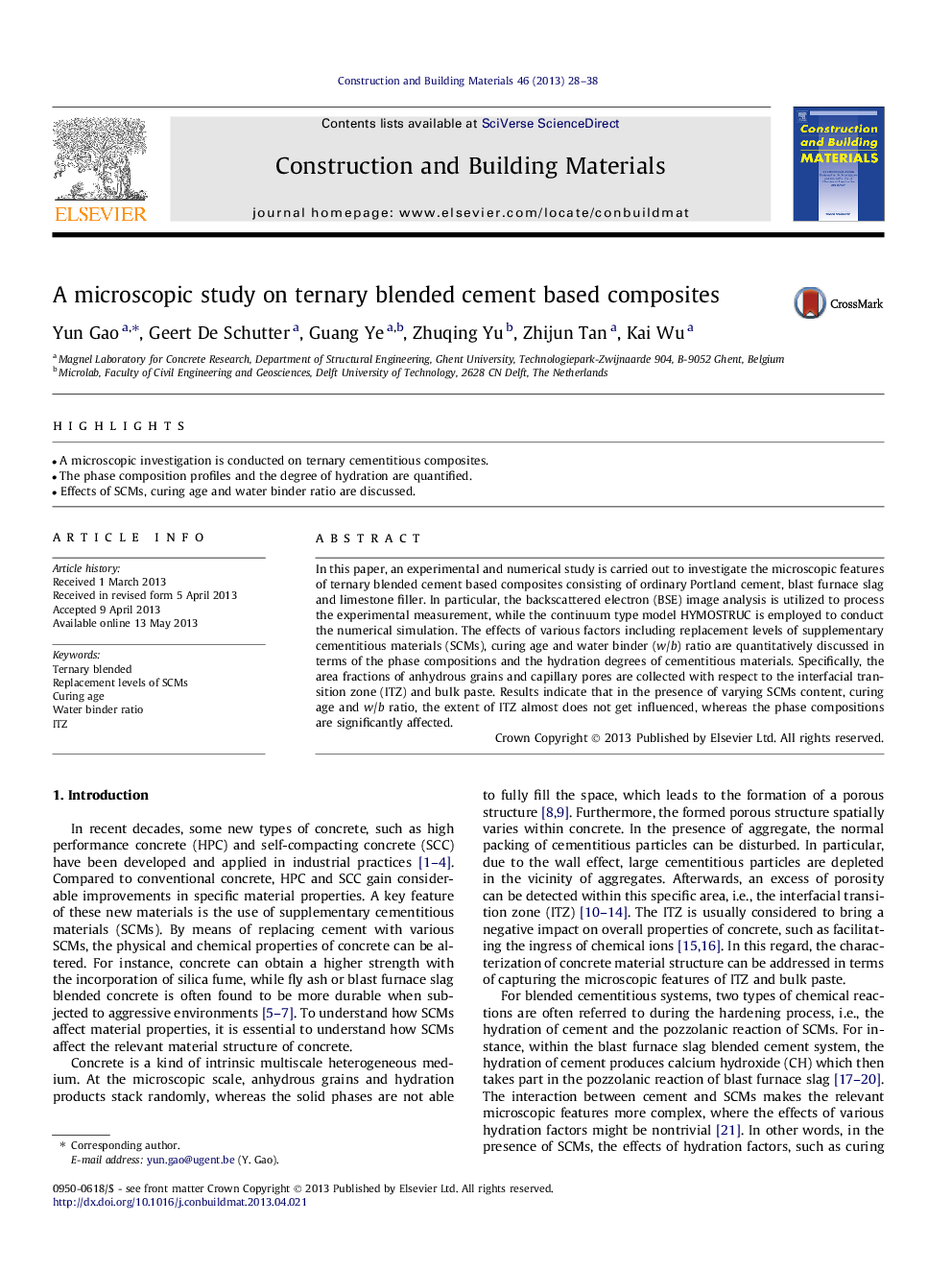| Article ID | Journal | Published Year | Pages | File Type |
|---|---|---|---|---|
| 6725559 | Construction and Building Materials | 2013 | 11 Pages |
Abstract
In this paper, an experimental and numerical study is carried out to investigate the microscopic features of ternary blended cement based composites consisting of ordinary Portland cement, blast furnace slag and limestone filler. In particular, the backscattered electron (BSE) image analysis is utilized to process the experimental measurement, while the continuum type model HYMOSTRUC is employed to conduct the numerical simulation. The effects of various factors including replacement levels of supplementary cementitious materials (SCMs), curing age and water binder (w/b) ratio are quantitatively discussed in terms of the phase compositions and the hydration degrees of cementitious materials. Specifically, the area fractions of anhydrous grains and capillary pores are collected with respect to the interfacial transition zone (ITZ) and bulk paste. Results indicate that in the presence of varying SCMs content, curing age and w/b ratio, the extent of ITZ almost does not get influenced, whereas the phase compositions are significantly affected.
Keywords
Related Topics
Physical Sciences and Engineering
Engineering
Civil and Structural Engineering
Authors
Yun Gao, Geert De Schutter, Guang Ye, Zhuqing Yu, Zhijun Tan, Kai Wu,
